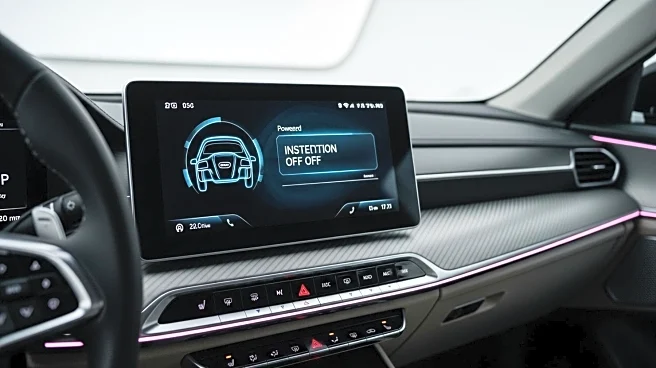What's Happening?
Stellantis, the parent company of Jeep, Dodge, and Chrysler, has announced the indefinite suspension of its STLA AutoDrive Level 3 driver-assistance program. This decision is driven by escalating development costs, technical challenges, and subdued consumer interest in advanced driving technologies. The Level 3 system was designed to enable hands-free and eyes-off driving under certain conditions, allowing drivers to engage in non-driving tasks. However, the program faced significant hurdles, including high costs, technical complexities, and uncertain market demand. Stellantis has confirmed that the technology remains viable but will not be deployed in the near future. The company is now shifting its focus to external suppliers, notably aiMotive, a startup it acquired in 2022, to develop the next phase of AutoDrive.
Why It's Important?
The suspension of the Level 3 driver-assistance program highlights the challenges faced by traditional automakers in competing with tech-focused companies like Tesla in the software-defined vehicle space. Stellantis' decision reflects broader industry struggles with cost overruns, talent shortages, and entrenched corporate structures when investing in advanced driver-assistance systems. This move may prompt other manufacturers to reassess their autonomous ambitions, especially as costs spiral and consumer adoption lags. The recent AAA poll shows that only 13% of Americans trust self-driving cars, with 61% expressing fear about riding in one, indicating a significant barrier to market acceptance.
What's Next?
Stellantis plans to leverage its partnership with aiMotive to develop the next phase of AutoDrive, which is part of its STLA ABC platform. The pause in the Level 3 program could free up resources for more immediate priorities, such as electric vehicle production. However, Stellantis risks ceding ground to competitors that continue to invest in and deploy advanced driver-assistance technologies. The automotive industry is closely watching Stellantis' strategic pivot and how it navigates towards a more autonomous future.
Beyond the Headlines
This development underscores the volatile nature of automotive technology advancement, where bold visions must contend with real-world constraints. The decision to pause the program arises from a confluence of factors including prohibitive development costs, formidable technological complexities, and tepid consumer demand. The six levels of automation, as defined by the Society of Automotive Engineers, range from no driving automation to full driving automation, with Level 3 representing conditional automation where the vehicle handles most tasks but requires human intervention when prompted.












